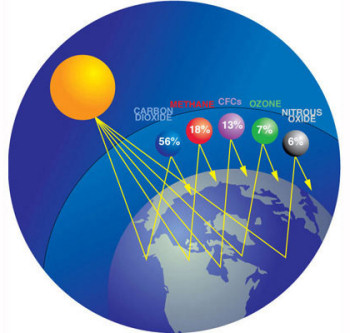Why is an excess of greenhouse gases bad?

Many chemical compounds found in the Earth’s atmosphere act as “greenhouse gases.” These gases allow sunlight to enter the atmosphere freely. When sunlight strikes the Earth’s surface, some of it is re-radiated back towards space as infrared radiation (heat). Greenhouse gases absorb this infrared radiation and trap the heat in the atmosphere. Many gases exhibit these “greenhouse” properties. Some of them occur in nature (water vapor, carbon dioxide, methane, and nitrous oxide), while others are exclusively human made (certain industrial gases).
Greenhouse gas emissions come primarily from the combustion of fossil fuels in energy use. CO2 is the most important anthropogenic greenhouse gas, but other gases also make significant contributions to climate change. Other pollutants, such as fine particulates, also affect how much solar radiation is retained in Earth's atmosphere.
Levels of several important greenhouse gases have increased by about 25 percent since large-scale industrialization began around 150 years ago. During the past 20 years, about three-quarters of anthropogenic (human-caused) emissions came from the burning of fossil fuels. Concentrations of carbon dioxide in the atmosphere are naturally regulated by numerous processes collectively known as the “carbon cycle”.
In computer-based models, rising concentrations of greenhouse gases produce an increase in the average surface temperature of the Earth over time. Rising temperatures may, in turn, produce changes in rain patterns, storm severity, and sea level commonly referred to as “climate change.”